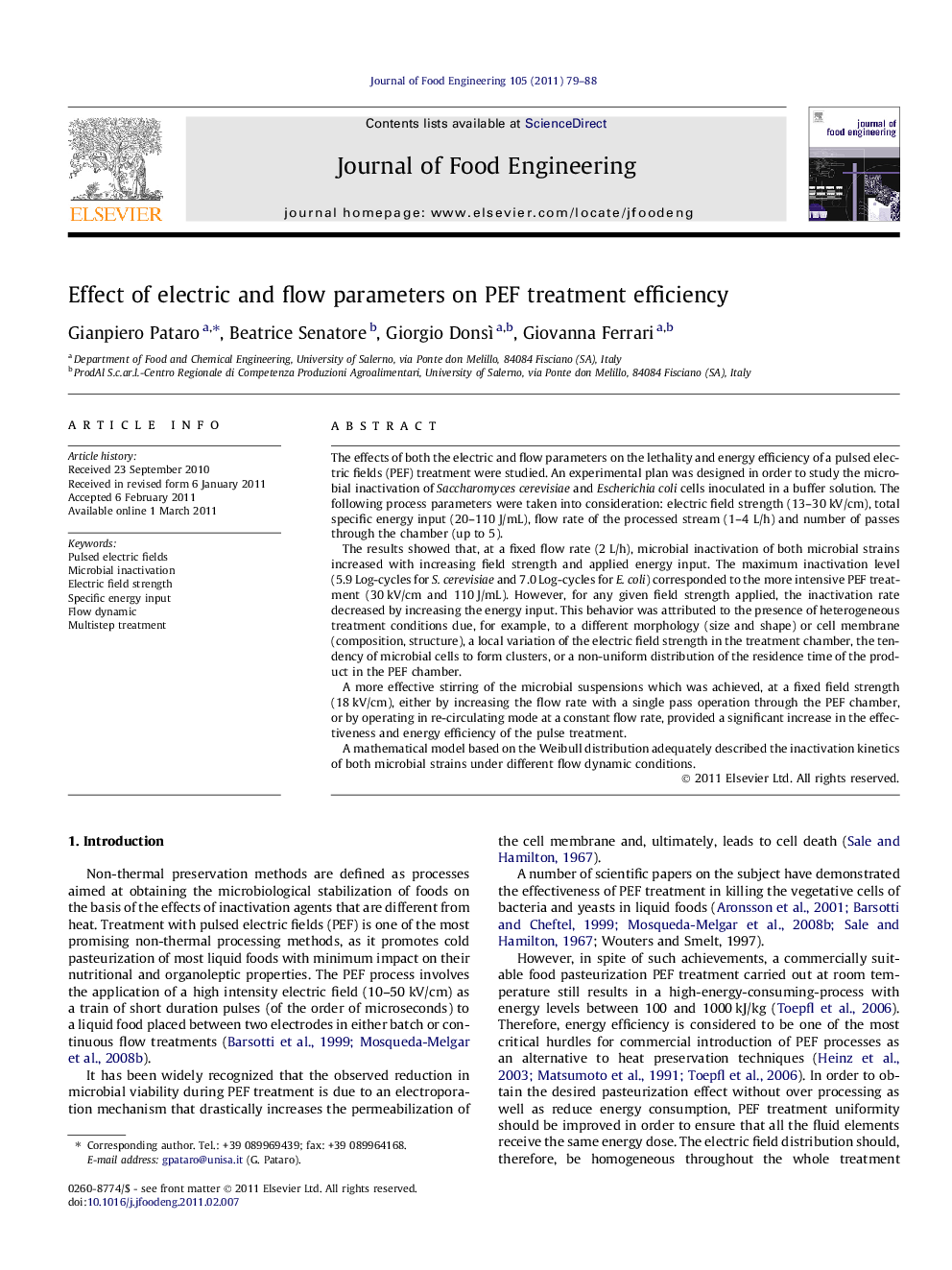| Article ID | Journal | Published Year | Pages | File Type |
|---|---|---|---|---|
| 223634 | Journal of Food Engineering | 2011 | 10 Pages |
The effects of both the electric and flow parameters on the lethality and energy efficiency of a pulsed electric fields (PEF) treatment were studied. An experimental plan was designed in order to study the microbial inactivation of Saccharomyces cerevisiae and Escherichia coli cells inoculated in a buffer solution. The following process parameters were taken into consideration: electric field strength (13–30 kV/cm), total specific energy input (20–110 J/mL), flow rate of the processed stream (1–4 L/h) and number of passes through the chamber (up to 5).The results showed that, at a fixed flow rate (2 L/h), microbial inactivation of both microbial strains increased with increasing field strength and applied energy input. The maximum inactivation level (5.9 Log-cycles for S. cerevisiae and 7.0 Log-cycles for E. coli) corresponded to the more intensive PEF treatment (30 kV/cm and 110 J/mL). However, for any given field strength applied, the inactivation rate decreased by increasing the energy input. This behavior was attributed to the presence of heterogeneous treatment conditions due, for example, to a different morphology (size and shape) or cell membrane (composition, structure), a local variation of the electric field strength in the treatment chamber, the tendency of microbial cells to form clusters, or a non-uniform distribution of the residence time of the product in the PEF chamber.A more effective stirring of the microbial suspensions which was achieved, at a fixed field strength (18 kV/cm), either by increasing the flow rate with a single pass operation through the PEF chamber, or by operating in re-circulating mode at a constant flow rate, provided a significant increase in the effectiveness and energy efficiency of the pulse treatment.A mathematical model based on the Weibull distribution adequately described the inactivation kinetics of both microbial strains under different flow dynamic conditions.
